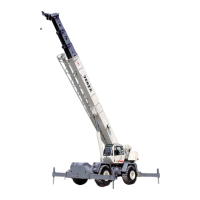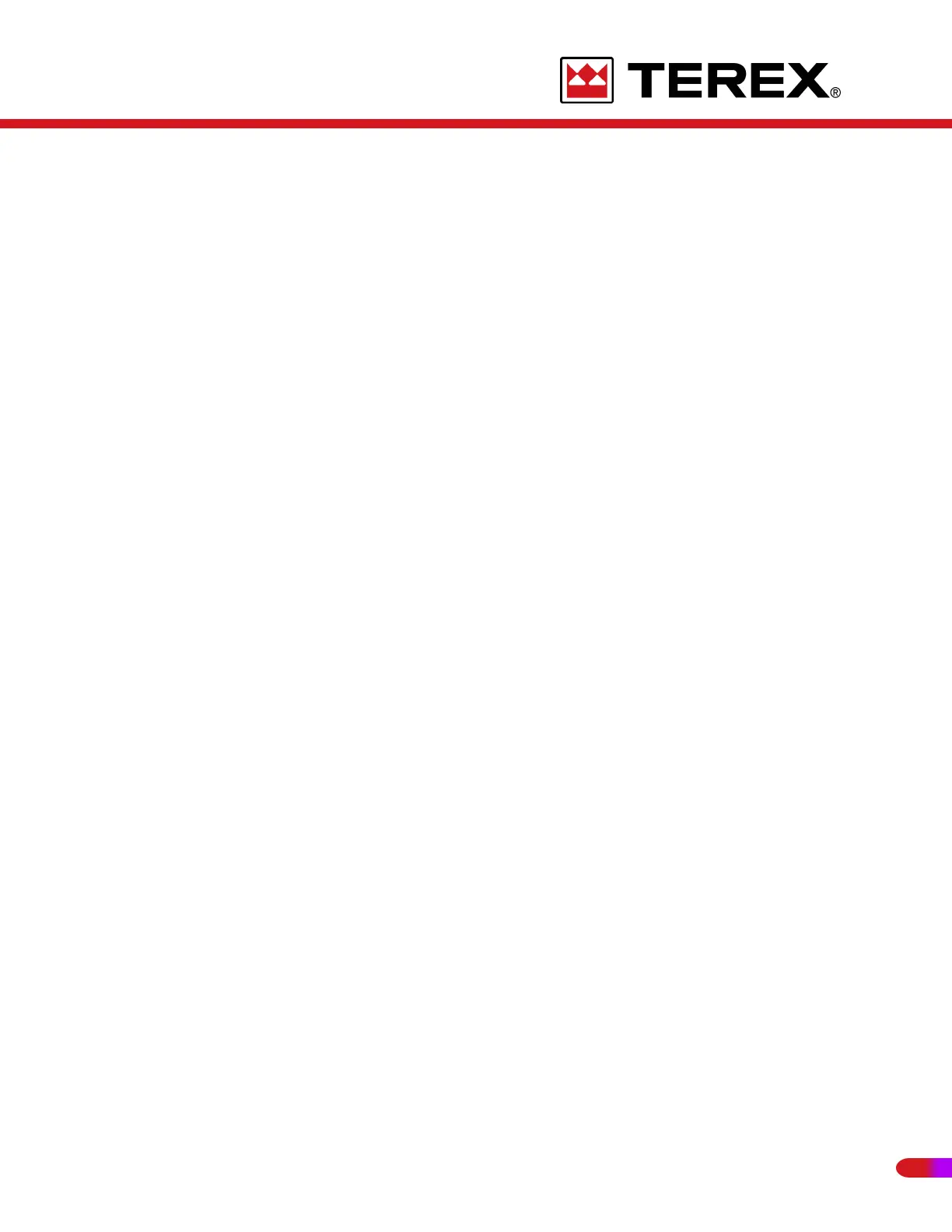NOTE: An external leak from telescope cylinders or hydraulic line within the boom
assembly does not cause leak-down without also having one or more of the above
conditions present.
BOOM LIFT CYLINDER
The suggested procedure for identifying the specific cause of leak-down should be
performed in the following sequence:
ELEVATE THE BOOM TO NEAR MAXIMUM ANGLE, not completely extended, with a boom
length sufficient to winch up a convenient payload approximately one (1) foot from ground
level. Shut off engine.
DISCONNECT THE EXTEND HOSE, PILOT DRAIN HOSE, AND THE SMALL PILOT LINE
HOSE at the holding valve ports and cap the pilot line hose and drain hose ends.
IF HYDRAULIC OIL CONTINUES TO RUN after the initial draining from either port of the
hold valve as the hoist cylinder continues to leak-down, the cause is within the hold valve.
IF CYLINDER LEAK-DOWN OCCURS with no oil leak from the hold valve ports, the cause
is within the cylinder.
OUTRIGGER JACK CYLINDER
The suggested procedure for identifying the specific cause of leak-down is similar to the
boom lift cylinder procedure:
SET THE OUTRIGGERS.
ELEVATE THE BOOM TO NEAR MAXIMUM ANGLE, not completely extended, with a boom
length sufficient to winch up a convenient payload approximately one (1) foot from ground
level. Shut off engine and remove pressure from the hydraulic reservoir by loosening the
filler cap.
DISCONNECT THE EXTEND HOSE FROM THE HOLD VALVE. This is a hose farthest away
from the port tube and should have an “E” stamped next to it.
IF HYDRAULIC OIL CONTINUES TO RUN after the initial draining from the port of the hold
valve as the jack cylinder continues to leak-down, the cause is within the hold valve.
IF CYLINDER LEAK-DOWN OCCURS with no oil leak from the hold valve port, the cause is
within the cylinder.
DO NOT START THE ENGINE UNTIL THE HOSES HAVE BEEN RECONNECTED. The
control valve spool is open-center to reservoir in the neutral position and return line oil
would be pumped out.
231
REVISED:

